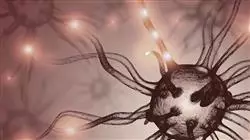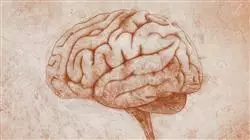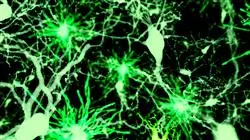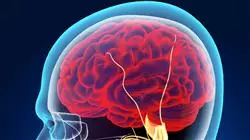University certificate
The world's largest faculty of education”
Description
Be at the forefront of the field of education with the support of Neurosciences applied to teaching and discover a new and exciting way to approach your profession"

This professional master’s degree in Neurosciences for Teachers offers a broad and comprehensive vision of the complex world of Neurosciences from an applied perspective. Starting from the biological principles and neuroimaging techniques, the different practical approaches existing in this discipline are collected.
In this program, the teaching professional will learn to understand and interpret the Neurosciences in order to apply them to their teaching experience.
During the specialization, two types of neuropsychological programs will be covered: the eminently biological ones focused on the neuronal principles and genetics of the brain, and the exclusively clinical programs, where the problems associated with pathologies affecting the brain and neurodegenerative diseases will be studied in depth. This bilateral approach facilitates better understanding of the functioning of Neurosciences from different fields, so that professionals have different options available to them.
This professional master’s degree addresses the new branches of Neuroscience that are currently under development, both theoretical and applied, such as Neuromarketing and Neuroeducation, and introduces the new branches that, in a few years, will be highly demanded by different sectors, such as Neuroeconomics or Neuroleadership. These emerging areas have not yet been included in typical educational programs, making this program a unique opportunity that will provide teachers with exclusive training.
Students will have access to the latest advances in Neurosciences with the most complete theoretical contents and through a developed learning system supported by practice. As a result, at the end of their specialization, they will be able to incorporate everything they have learned into their work.
A qualitative advantage over other professionals in the sector that will make it easier for teaching professionals to enter the job market or get a promotion, with extensive theoretical and practical knowledge that will improve their professional skills.
Enter the field of Neurosciences applied to teaching and become an expert in Neurosciences for Teachers"
This professional master’s degree in Neurosciences for Teachers contains the most complete and up-to-date educational program on the market. The most important features of the program include:
- More than 75 practical cases presented by experts in Neurosciences for Teachers
- The graphic, schematic, and practical contents with which they are created provide scientific and practical information on the disciplines that are essential for professional practice
- The latest developments in Neurosciences for Teachers
- Practical exercises where the self-evaluation process can be carried out to improve learning
- Special emphasis on innovative methodologies in Neurosciences for Teachers
- All of this will be complemented by theoretical lessons, questions to the expert, debate forums on controversial topics, and individual reflection assignments
- Content that is accessible from any fixed or portable device with an Internet connection
Through the PBL learning system, this program will provide you with the experience and skills required for Neuroscience applied to teaching"
The program is taught by professionals with extensive experience in the field of Neurosciences for Teachers, as well as renowned specialists from leading societies and prestigious universities.
Thanks to its multimedia content, developed with the latest educational technology, the professional will enjoy situated and contextual learning. In other words, a simulated environment that will provide immersive learning, programmed to train for real situations.
This program is designed around Problem-Based Learning, whereby the professional must try to solve the different professional practice situations that arise throughout the program. This will be done with the help of an innovative interactive video system, one of the most advanced in the educational market.
A program that will provide you with the ability to approach any situation that arises in the classroom, with the vision of a specialist"

A high-level educational and technological program with which you will be able to change the way you approach your work in the classroom"
Objectives
This program was created to train teachers to apply Neurosciences in their work in the classroom, incorporating a new focus and approach to their task as educators. A high-level qualitative leap that will propel them to the forefront of education.

The vanguard of teaching is at your fingertips, in a program specifically designed for teachers that will open new paths for your professional development. Take a step towards more specialized training in your industry"
General objectives
- Update knowledge on Neurosciences in their different fields of application, from the clinical, educational or social area
- Increase the quality of the teaching professional’s practice in their performance
- Introduce the teacher to the vast world of Neurosciences from a practical perspective
- Know the different disciplines involved in the study of the brain in relation to human behavior and its possibilities
- Learn to use the tools used in Neuroscience research and practice
- Develop skills and abilities in emotional development in the classroom
- Direct the student towards continuing education and research
Specific objectives
Module 1. Basis in Neurosciences
- Learn about the formation of the nervous system
- Understand the types of neurons
- Identify brain hemispheres and lobes
- Differentiate between localizationism and brain functionalism
- Discover the undifferentiated neurons
- Learn about programmed neural death
- Recognize interneuronal electrical communication
- Determine the role of myelin in neurons
- Understand interneuronal chemical communication
- Learn the peculiarities of the human brain
- Unravel the left brain
- Explore the white matter
- Recognize gender differences at the neural level
- Classify hemispheric functions
- Discover the new localizationism
- Understand invasive techniques
- Recognize non-invasive techniques
Module 2. The Emotional Brain
- Recognize the role of emotional intelligence
- Know the Mayer and Salovey model
- Differentiate between emotional maturation and emotional intelligence
- Discover emotional relearning
- Observe the relationship between intelligence and social skills
- Discover what The Papez Circuit is
- Explore the limbic brain
- Analyze the amygdala and positive emotion
- Understand the function of the amygdala and negative emotion
- Recognize the intensity of emotion
- Determine the affective value of emotion
Module 3. Neuropsychology
- Classify neurohormones and their functions
- Differentiate between age and neuronal plasticity
- Discover neuronal development
Module 4. Neuroeducation
- Verify the connection between intelligence and creativity
- Analyze academic intelligence
- Discover the cognitive processes
- Observe the connection between the brain and cognition
Module 5. Neurolinguistics
- Differentiate between gross vs. fine motor skills
- Approach the experience at the neural level
- Establish learning at the neuron level
- Observe the effectiveness of repetitive reinforcement
- Discover neuromuscular control
- Explore the neuronal insigne
Module 6. Neuromarketing
- Verify metacognitive development
- Analyze the role of feelings
- Explain the processes of perception
- Explore the elements of attention
- Understand the process of attention
- Analyze the neuronal bases of memory
Module 7. Neuroeconomics
- Further study the concept of the economic brain
- Understand the neural basis of computational errors
- Know how the mathematical brain develops
- Confront the concepts of mathematics and intelligence
- Delve into the concepts of learning and memory
Module 8. Neuroleadership
- Gain further understanding of the genetics of leadership
- Know the effects of successes and failures at the neural level
- Know how to apply the different optimization strategies of Neuroleadership
Module 9. Neuropolitics
- Explore the concept of the political brain
- Know how group membership and group bias are formed
- Study, in depth, the positive and negative emotions generated in politics
- Probe the candidate’s brain
- Know how political branding is formed around a candidate
- Study, in depth, the new tools applied to Neuropolitics
Module 10. Other Branches of Applied Neurosciences
- Study Neurobranding in depth
- Know the concept of Neuroarchitecture and how it works
- Study Neurotechnology in depth
- Know the limits of Neuroscience research
- Study the concept of Neuroethics in depth
- Study in depth the relationship between the brain and taste: Neurogastronomy
- Learn more about Neurocriminology and its implication in psychopathic personalities

Make the most of the opportunity and take the step to get up to date on the latest developments in Neurosciences for Teachers”
Professional Master's Degree in Neuroscience for Teachers
In order to understand the functioning and structure of the nervous system from different approaches, especially its relationship with education, at TECH Global University we have developed a Professional Master's Degree in Neuroscience for Teachers. Our goal is to qualify education professionals to understand the learning processes that occur in the brain and that determine how we respond to stimuli from teachers, which are subsequently transformed into knowledge. We also delve into the integration of the sciences of education, such as pedagogy, with those that deal with neurological development, specifically higher cognitive functions.
Specialize in Neuroeducation
In addition to studying aspects related to neuropsychology, neuromarketing, neuroeconomics and other branches of applied neurosciences, in the postgraduate programs of TECH's Faculty of Education we address the specialized learning in Neuroeducation. In this sense, our teaching team, internationally recognized by prestigious scientific societies, offers teaching related to the neural bases of learning, brain education models, cognitive processes related to emotion and the socialization of knowledge, the generation of deep learning and gamification in educational processes. In this way, teachers graduated from TECH Global University will be able to apply the latest advances in Neuroscience in their respective classrooms.







